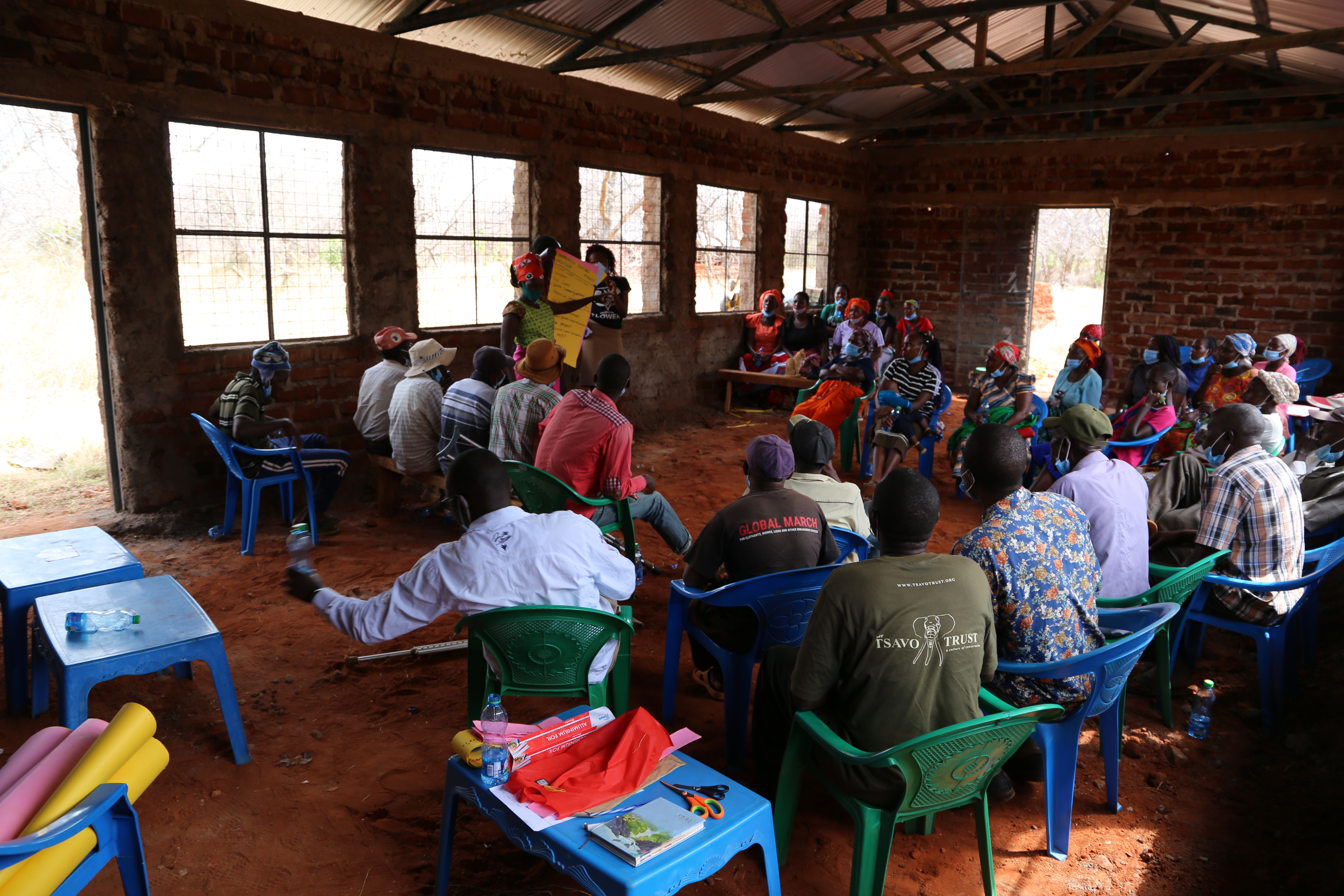The process involved in Data for decision-making included gathering information by conducting participatory community Focus Group Discussions (FGDs) and from key stakeholders, development of digital questionnaires, enumerators training on data collection, community data collection exercise and analysing the collected data to draw meaningful insights.
The data-gathering process involved participatory FGDs and engaging stakeholders, collecting information on the positive and negative impacts of Tsavo Trust (TT). This supported the development of a structured survey. The first Stakeholder meeting presented FGD findings, with participants providing additional insights. A digital questionnaire was created based on this input. Ten trained enumerators collected data from 156 households (approx. 950 individuals), achieving gender balance.
Community meetings shared survey results and ideas for addressing negative impacts. A second Stakeholder workshop gathered additional ideas. These components generated meaningful insights for decision-making.
These key components, including participatory discussions, stakeholder engagement, the development of a digital questionnaire, and data collection from households, were instrumental in generating meaningful insights for decision-making.
Using community youths to collect the data ensured that we got a good reception from respondents who answered the questions truthfully without fear of victimisation.
The sharing of results with communities and allowing them to give ideas on mitigation of the prioritised negative impacts made the phase start getting direction on negative impacts mitigation.
Stakeholders identified in the 2nd Stakeholders meeting contributed towards by giving more ideas for action on the negative impacts.
The community members shared local and traditional methods of mitigating the prioritised negative impacts which we found easy to implement with a small budget, this made us understand that sometimes the solution to otherwise big problems is with the people themselves and the need to be involving them in decision making.
TT learnt that bringing a wider network of stakeholders had varying benefits. Ensuring there was representation from County Government, like-minded NGO’s, Kenya Wildlife Services and Community helped TT and the stakeholders identify solutions/ideas for action for every negative impact identified. This helped reduce the pressures on TT to deliver and address all the negative impacts identified during the evaluation.
Sharing the information with the stakeholders also acted as a platform for Tsavo Trust to share what it does with The County Government, KWS and relevant stakeholders
